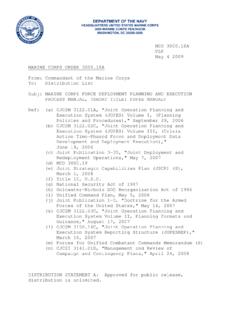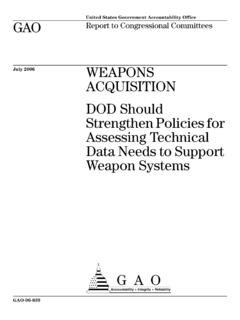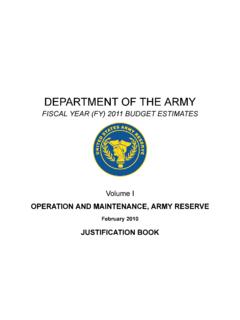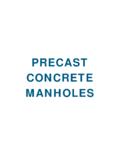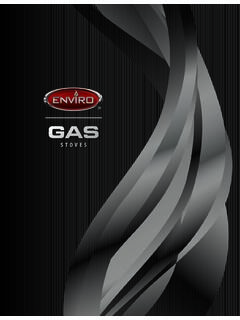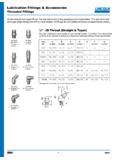Transcription of STRUCTURAL STEEL TERMS/ LAYOUT AND FABRICATION OF …
1 CHAPTER 3 STRUCTURAL STEEL TERMS/ LAYOUT ANDFABRICATION OF STEEL AND PIPES tructural STEEL is one of the basic materials usedin the construction of frames for most industrialbuildings, bridges, and advanced base , you, as a Seabee Steelworker, must have athorough knowledge of various STEEL structuralmembers. Additionally, it is necessary before anystructural STEEL is fabricated or erected, a plan of actionand sequence of events be set up. The plans,sequences, and required materials are predeterminedby the engineering section of a unit and are then drawnup as a set of blueprints.
2 This chapter describes theterminology applied to STRUCTURAL STEEL members, theuse of these members, the methods by which they areconnected, and the basic sequence of events whichoccurs during STEEL MEMBERSYour work will require the use of variousstructural members made up of standard structuralshapes manufactured in a wide variety of shapes ofcross sections and sizes. Figure 3-1 shows many ofthese various shapes. The three most common typesof STRUCTURAL members are the W-shape (wide flange),the S-shape (American Standard I-beam), and theC-shape (American Standard channel).
3 These threetypes are identified by the nominal depth, in inches,along the web and the weight per foot of length, inpounds. As an example, a W 12 x 27 indicates aW-shape (wide flange) with a web 12 inches deep anda weight of 27 pounds per linear foot. Figure 3-2shows the cross-sectional views of the W-, S-, andC-shapes. The difference between the W-shape andFigure 3-1. STRUCTURAL shapes and 3-2. STRUCTURAL S-shape is in the design of the inner surfaces of theflange. The W-shape has parallel inner and outerflange surfaces with a constant thickness, while theS-shape has a slope of approximately 17 on the innerflange surfaces.
4 The C-shape is similar to the S-shapein that its inner flange surface is also slopedapproximately 17 .The W-SHAPE is a STRUCTURAL member whosecross section forms the letter H and is the most widelyused STRUCTURAL member. It is designed so that itsflanges provide strength in a horizontal plane, whilethe web gives strength in a vertical plane. W-shapesare used as beams, columns, truss members, and inother load-bearing BEARING PILE (HP-shape) is almostidentical to the W-shape. The only difference is thatthe flange thickness and web thickness of the bearingpile are equal, whereas the W-shape has different weband flange S-SHAPE (American Standard I-beam) isdistinguished by its cross section being shaped like theletter I.
5 S-shapes are used less frequently thanW-shapes since the S-shapes possess less strength andare less adaptable than C-SHAPE (American Standard channel) hasa cross section somewhat similar to the letter C. It isespecially useful in locations where a single flat facewithout outstanding flanges on one side is C-shape is not very efficient for a beam or columnwhen used alone. However, efficient built-upmembers may be constructed of channels assembledtogether with other STRUCTURAL shapes and connected byrivets or ANGLE is a STRUCTURAL shape whose crosssection resembles the letter L.
6 Two types, as illustratedin figure 3-3, are commonly used: an equal-leg angleand an unequal-leg angle. The angle is identified bythe dimension and thickness of its legs; for example,angle 6 inches x 4 inches x 1/2 inch. The dimensionof the legs should be obtained by measuring along theoutside of the backs of the legs. When an angle hasunequal legs, the dimension of the wider leg is givenfirst, as in the example just cited. The third dimensionapplies to the thickness of the legs, which al ways haveequal thickness. Angles may be used in combinationsof two or four to form main members.
7 A single anglemay also be used to connect main parts PLATE is a STRUCTURAL shape whose crosssection is in the form of a flat rectangle. Generally, amain point to remember about plate is that it has awidth of greater than 8 inches and a thickness of 1/4inch or are generally used as connections betweenother STRUCTURAL members or as component parts ofbuilt-up STRUCTURAL members. Plates cut to specificsizes may be obtained in widths ranging from 8 inchesto 120 inches or more, and in various thicknesses. Theedges of these plates may be cut by shears (shearedplates) or be rolled square (universal mill plates).
8 Plates frequently are referred to by their thicknessand width in inches, as plate 1/2 inch x 24 inches. Thelength in all cases is given in inches. Note in figure 3-4that 1 cubic foot of STEEL weighs 490 pounds. hisweight divided by 12 gives you , which is theweight (in pounds) of a STEEL plate 1 foot square and 1inch thick The fractional portion is normally droppedand 1-inch plate is called a 40-pound plate. In practice,you may hear plate referred to by its approximateweight per square foot for a specified thickness. Anexample is 20-pound plate, which indicates a 1/2-inchplate.
9 (See figure 3-4.)The designations generally used for flat STEEL havebeen established by the American Iron and SteelInstitute (AISI). Flat STEEL is designated as bar, strip,Figure 3-3. 3-4. Weight and thickness of STEEL , or plate, according to the thickness of thematerial, the width of the material, and (to someextent) the rolling process to which it was 3-1 shows the designations usually used forhot-rolled carbon steels. These terms are somewhatflexible and in some cases may STRUCTURAL shape referred to as a BAR has awidth of 8 inches or less and a thickness greater than3/16 of an inch.
10 The edges of bars usually are rolledsquare, like universal mill plates. The dimensions areexpressed in a similar manner as that for plates; forinstance, bar 6 inches x 1/2 inch. Bars are available ina variety of cross-sectional shapes round,hexagonal, octagonal, square, and flat. Three differentshapes are illustrated in figure 3-5. Both squares androunds are commonly used as bracing members oflight structures. Their dimensions, in inches, apply tothe side of the square or the diameter of the that you have been introduced to the variousstructural members used in STEEL construction, let usdevelop a theoretical building frame from where you,the Steelworker, would start on a project after all theearthwork and footings or slab have been this sequence is theoretical and may varyFigure 3-5.
